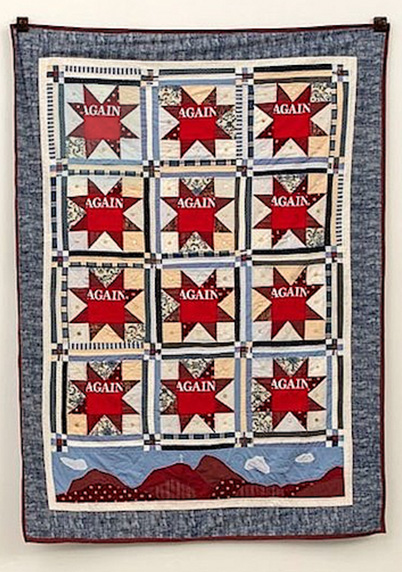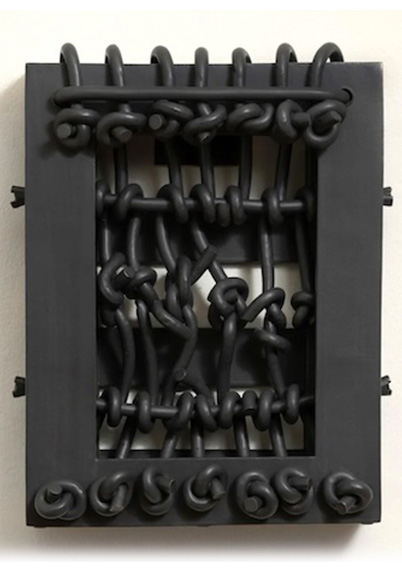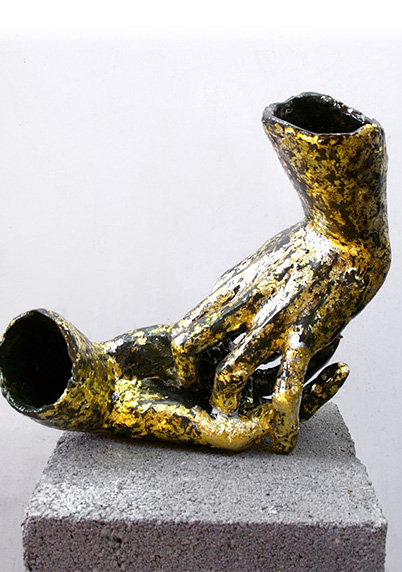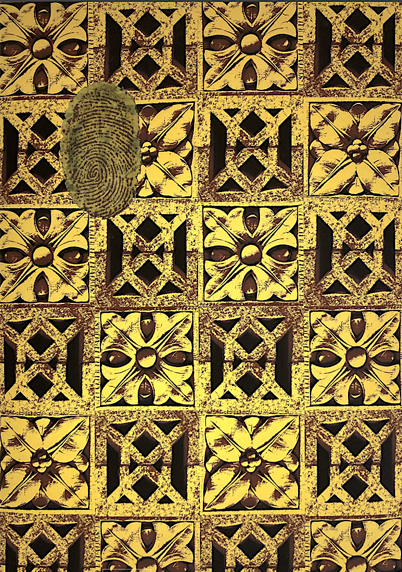- Apply
- Visit
- Request Info
- Give
House of D: Voices out the Window, Stories on the Ground
co-created by Lauren Sandler and Alycia Bright Holland, curated in collaboration with Julia Wintner, Gallery Director, The Art Gallery at Eastern Connecticut State University.
Exhibition created in tandem with The Prison That Made America: Women’s House of Detention (1932-1974), a performance directed by Alycia Bright Holland.
Exhibition Foreword by Gerald A. Brown
There is a thin line between artifacts and art made for art's sake, and I am constantly looking for how the boundaries between these two ideas are blurred. In some instances, the intersection of art and history can be sneaky and manifest in physical places, such as a surge of new confederate statues erected during the founding of the NAACP[1] or the pristine rebuilding of a Philadelphian city block after a bomb was dropped on the pro-Black family’s home. Sometimes, this occurrence is bold and wielded by artists drawing attention to a moment in time, like Nona Faustine’s photographs that capture the hidden past of auctioned enslaved Africans on Wall Street[2] or Alex Bell’s artistic journalism critiquing the New York Times' racist coverage of Black narratives[3]. Throughout these scenarios, we can see how these objects shape and alter memory.
House of D: Voices out the Window, Stories on the Ground is an exhibition that capitalizes on the overlap between art and history. The show's conception stems from conversations between artist and educator Lauren Sandler and interdisciplinary movement artist and scholar Alycia Bright Holland around the book, The Women’s House of Detention: A Queer History of a Forgotten Prison by Hugh Ryan. With a shared interest in using art to uncover obfuscated histories, Sandler and Bright Holland establish an exhibition framework where artists weave personal narratives and historical archives together. Expanding the curatorial connection to the Women’s House of Detention (House of D) beyond the confinement of Greenwich Village, the prison becomes an archaeological site that extends across geography and into the crooks of our bodies. Each exhibiting artist embodies these sentiments, inviting the public to peer into their vulnerable processing and explore hidden histories that are buried in all of us. The artists and contributors to the exhibition are: Viola Bordon, Paul Briggs, Dani Clauson, Incorrigibles Project, Sana Musasama, and Lauren Sandler.
By curating this exhibition from the historical lens of the House of D, it can be presumptuously inferred that every contributor is showing work related to this prison. With a variety of connections outside of this institution, viewers may wonder what is the point of curating a collection of experiences that appear subtly linked. Moreover, what can audience members learn if their identity does not acutely match the narratives connected to the House of D or the exhibiting artists?
This slight asymmetry between the art and the exhibition thesis can feel destabilizing but potentially rejuvenating, disrupting expectations of how we approach and interact with the content. Navigating projections placed on work depicting underrepresented lived experiences, artists of marginalized identities are often wrestling with accusations that their work is unrelatable to the masses. These projections create a divide between who the “intended” audience is and who can selectively listen, incentivizing a variety of viewers to disengage with the content. But this asymmetrical connection creates a glitch in the system, generating new entries into the work and broadening the purpose of the content. This shift challenges the psychological block that occurs during the disengagement, permitting new perspectives that could normally be disregarded or flattened to fit the viewer’s prior knowledge.
This exhibition framework offers personal excavations and experiential understandings from each artist, instilling a collective sharing and learning of invisible histories. As we uncover overlooked lineages in one person’s story, we cannot help but see similarities of our hidden history waiting to be discovered. Examples are: Sana Musasama bearing stories from her experience of working with young women in Cambodia, Lauren Sandler exploring the cultural and consumer good legacies carried by different national vessels, and Paul Briggs reflecting on physical and psychological impact of mass incarceration on Black Americans in his Cell Personae series. This exhibition’s illumination of forgotten histories uncovers our interconnected thread to imperialism.
The curation of this show starts as a personal connection to a familial land and extends to a universal experience gently happening within each of us. Merging different modalities of oral and written traditions, the act of bringing these works together through the lens of the House of D, a stand-in for perpetual global policing of morality and sin, enables a new opportunity for engagement that can push all of us out of our comfort zone, if we let it. This show is a quiet journey in rediscovering interlocking personal, communal, and historical legacies that extend beyond obvious lineages and assumptions. Akin to this exhibition, I believe that if we allow ourselves, we can find an inception to a personal journey yet to be unearthed, potentially located in the discoveries of someone else’s story.
Gerald A. Brown, 2025
Chicago Southside native, Gerald A. Brown is a multi-disciplinary artist based in Philadelphia, PA. She received her BFA from Syracuse University, double emphasis in Sculpture and Ceramics. Gerald is the host of the Unraveling Podcast, serves as the Social Media Curator for NCECA, and is a co-founder of the Clay Siblings’ Project. Currently, she is a ceramics post-bac student as well as one of the Queer Material Lab Resident artist student at Tyler School of Art at Temple University. In addition, she is a ceramic instructor at West Chester University and Black Hound Clay Studio. Her most prized motto's is "I want love to be my legacy".




[1] “Whose Heritage? 153 Years of Confederate Iconography.” splcenter.org. Accessed March 22, 2025. https://www.splcenter.org/sites/default/files/com_whose_heritage_timeline_print.pdf.
[2] “Nona Faustine unpacks the dark and hidden history of America” British Journal of Photography. Accessed March 22, 2025. https://www.1854.photography/2025/03/nona-faustine-white-shoes/
[3] Bell, Alexandra. “Olympic Threat.” Alexandra Bell, 2020. https://alexandrabell.com/counternarratives

